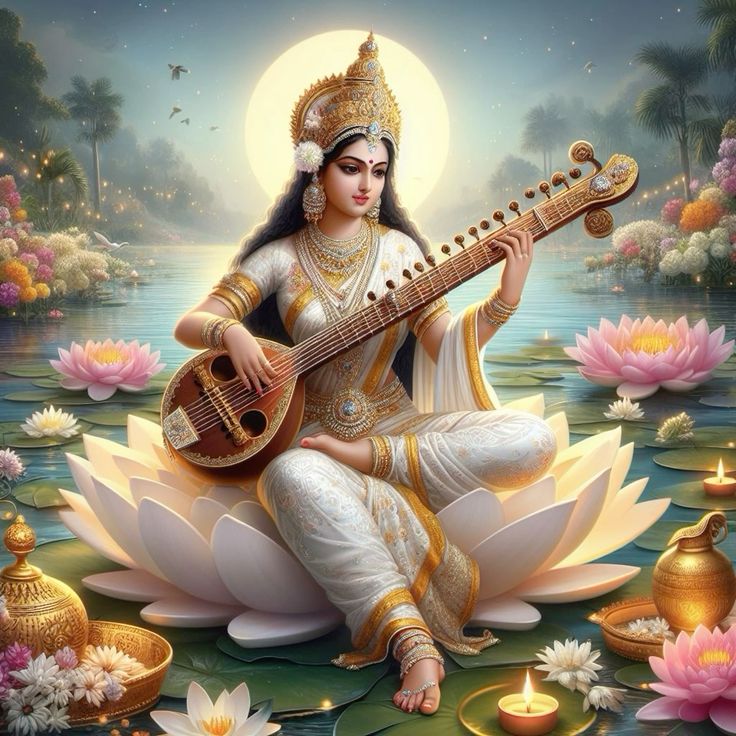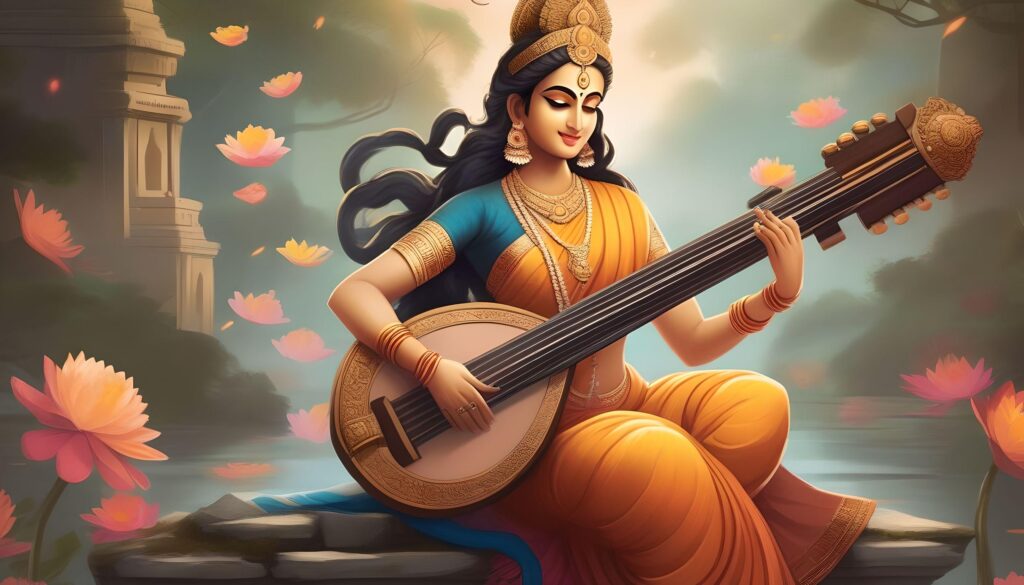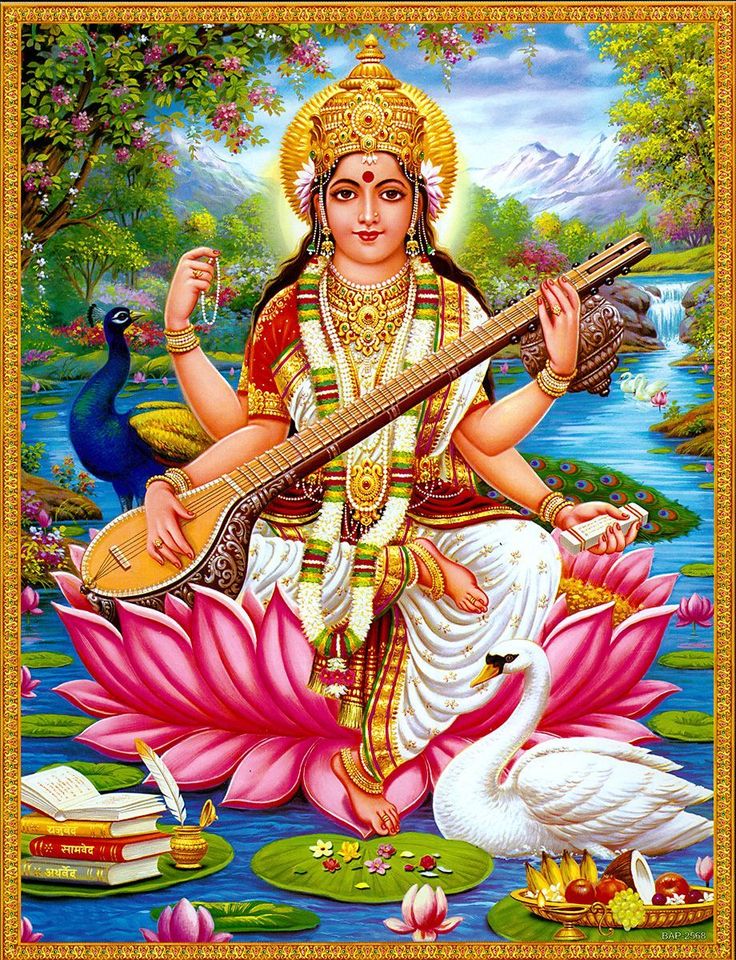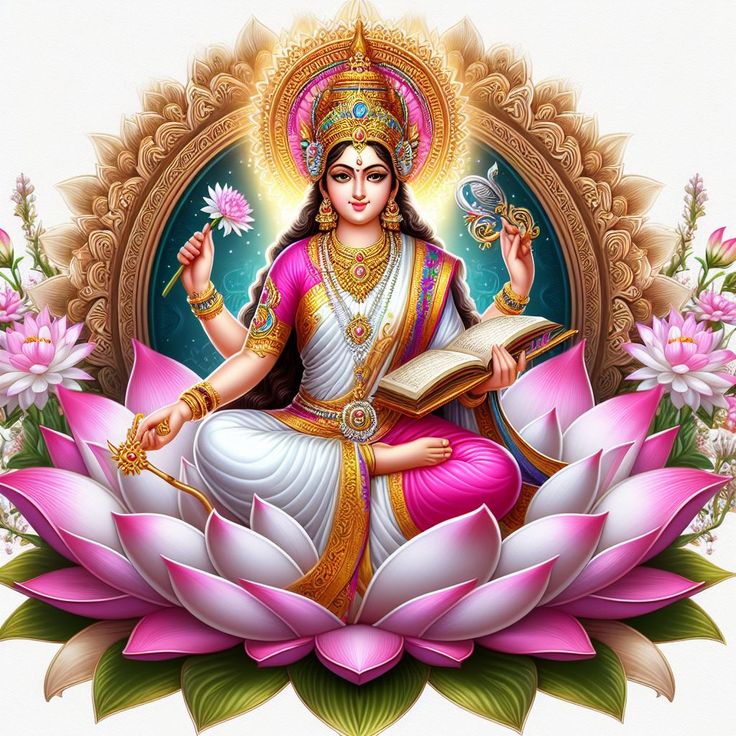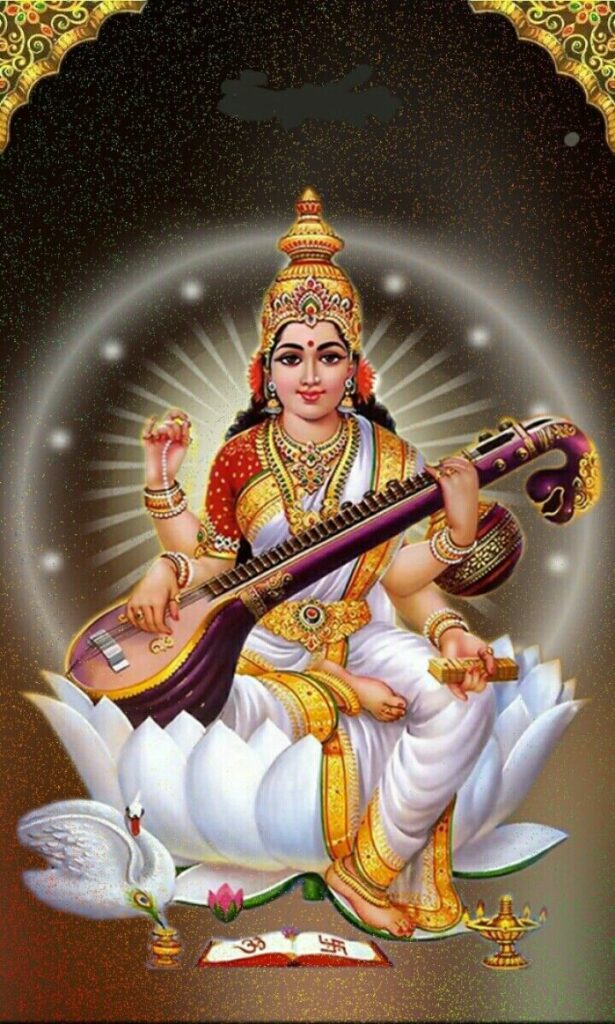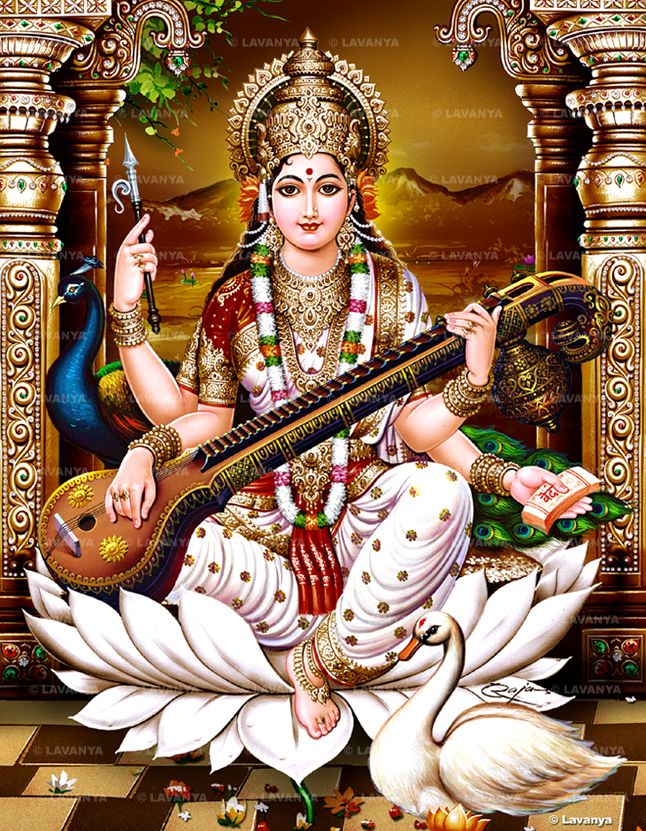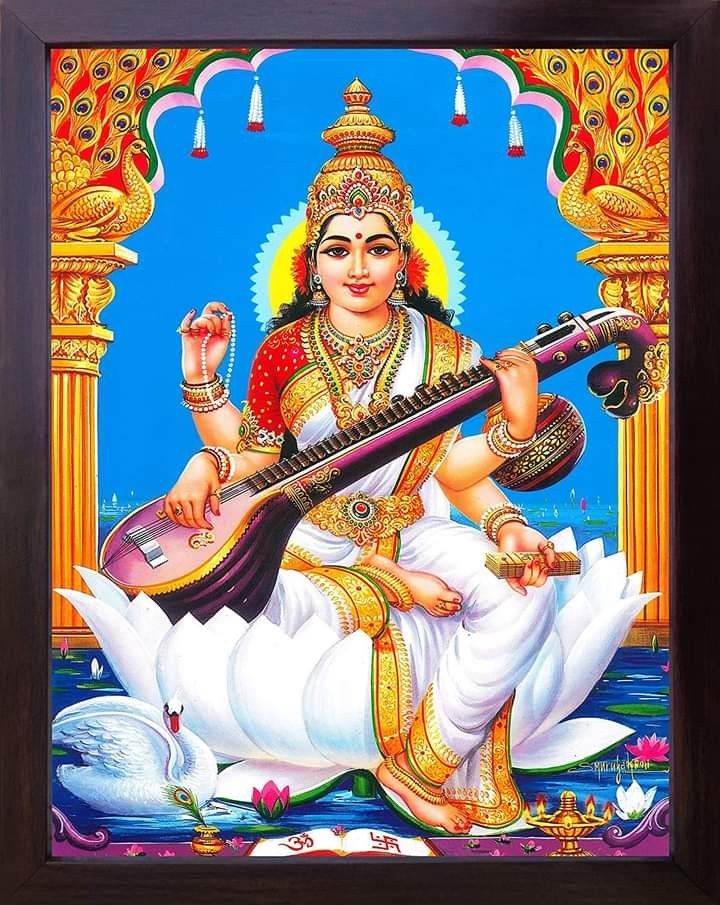Saraswati White Saree: Pure White Saree Attire Of Goddess
Introduction
Deeply and profoundly significant in the complex tapestry of Indian culture, the saree is a timeless garment that has captured the hearts and imaginations of people all over the Indian subcontinent. Among the many colors and designs that accentuate the female figure, the white saree is one especially symbolic of purity, knowledge, and the divine feminine.
Weaved into the stories of Hindu mythology and religious iconography, the white saree is naturally connected to the adored goddess Saraswati, the personification of knowledge, arts, and education. We investigate the origin, symbolism, and development of the white saree in this fascinating tour, so revealing the close relationships between this graceful drape and the deity it stands for.
The Beginning of the White Sare
The saree originated in the Indus Valley Civilization, where the garment originally showed up as a three-piece set including the Antariya, Uttariya, and Stanapatta. This flawless garment changed over years, and the white saree became a clear and important variety.
White is the main hue used in Saraswati’s clothing not only for appearance but also for symbolic portrayal of the goddess’s essential qualities. White is connected in the rich fabric of Indian civilization with purity, simplicity, and the search of knowledge – traits that define the divine personas of Saraswati.

The White Sare’s Symbolic Meaning
In the magical stories of Hindu mythology, the white saree worn by Saraswati acts as a visual metaphor for the goddess’s great connection to the domains of learning, creativity, and enlightenment. The fabric’s perfect color captures the purity of Saraswati’s essence, a blank canvas on which the divine feminine may show her several sides.
With its simplicity and elegance providing a canvas for the complex embroidery and embellishments adornning her clothing, the white saree also reflects the goddess’s function as patron of the arts. Often including themes of flowers, birds, and heavenly bodies, these complex designs—which reflect the goddess’s mastery of the creative arts—showcase.
Furthermore, Saraswati’s white saree symbolizes the goddess’s relentless dedication to the search of knowledge and the sharing of wisdom. The fabric’s purity depicts the clarity of mind and the illumination of the mind Saraswati epitomizes, therefore motivating her followers to aim for intellectual and spiritual illumination.
The Evolution of the White Saree
The path of the white saree across the years has been one of amazing change in both its physical shape and cultural importance. Though the fundamental nature of the garment has been constant, the ways in which it has been worn, decorated, and understood have changed with the tides of time and custom.
Regional Variations
The white saree has evolved in distinctive and mesmerizing ways over the several parts of the Indian subcontinent. Often embellished with elaborate needlework and containing themes honoring the goddess Saraswati and her beautiful qualities, the white saree is worn in the eastern parts of India Renowned for its exquisite floral designs and complex Kantha embroidery, which pays tribute to the rich textile legacy of the Bengali Tant saree, is its
With the Coorgi and Nair populations of Karnataka and Kerala respectively embracing the garment as a sign of their cultural identity, the white saree has been assiduously blended with the traditional costume of the southern states. These geographical variances not only demonstrate the versatility of the white saree but also the close ties between the garment and the several cultural settings of India.

Saree as a painting canvas
With weavers, printers, and embroiderers exhibiting their extraordinary workmanship on the immaculate fabric, the white saree has also evolved over ages as a canvas for artistic expression. From the complex Jamdani weaving of West Bengal to the vivid Kalamkari designs of Andhra Pradesh, the white saree has evolved as a canvas for honoring and conserving India’s rich textile legacy.
These creative adjustments have given the saree more symbolic importance in addition to improving its outward look. Incorporating motifs, designs, and techniques honoring the goddess Saraswati and her divine qualities has enhanced the garment’s link to the sphere of the holy and the spiritual.
Saraswati and the White Saree
Often seen in the magical stories of Hindu mythology, the goddess Saraswati is shown wearing a perfect white saree, a visual depiction of her basic qualities and the great relevance she carries inside the spiritual and cultural fabric of India.
The Image of Saraswati
Usually seated on a lotus flower, Saraswati is shown in Hindu iconography carrying a veena (a stringed musical instrument) and a book or scripture, so signifying her mastery of the arts and her part as the patron of wisdom and study. Her flowing white saree acts as a visual emblem for the simplicity, purity, and clarity of thinking she radiates.
White is chosen for Saraswati’s saree not only for looks but also for a purposeful, symbolic portrayal of the goddess’s essential qualities. In the rich tapestry of Indian civilization, white is connected with purity, honesty, and the search of enlightenment – traits that define Saraswati’s divine character most importantly.

The Attributes of Saraswati
Saraswati, the goddess of knowledge, arts, and learning, is visually shown in her white saree as her relentless dedication to the search of wisdom and the spreading of enlightenment. The immaculate fabric depicts the clarity of mind and the illumination of the mind she embodies, therefore motivating her followers to aim for intellectual and spiritual development.
Furthermore, Saraswati’s white saree represents her function as the supporter of the artistic endeavors. The simplicity and beauty of the garment highlight the goddess’s mastery of the artistic field by allowing the complex embroidery and embellishments that cover her clothing a stage.
The White Saree’s Ongoing Legacy
As a sartorial statement of the divine feminine, the white saree has crossed time and space to become a timeless emblem that still enthralls the hearts and brains of people all throughout the Indian subcontinent and beyond.
Saraswati’s impact on Indian society
The rich tapestry of Indian culture shows the great impact of Saraswati and her white saree, where the garment has evolved into a symbol of respect, veneration, and knowledge quest. From the temples and shrines honoring the goddess to the yearly Saraswati Puja, the white saree has evolved into a visual emblem of the divine feminine and the virtues she embodies, woven into the fabric of society.
The White Saree’s Continuous Enchantment
Beyond its religious and cultural roots, the white saree has a particular place in the hearts and wardrobes of Indian women in the current period as a symbol of grace, elegance, and everlasting beauty. Whether worn as a daily statement of personal style or for a particular event, the white saree is a beloved garment that ties the wearer to the rich legacy and customs of the Indian subcontinent.
Conclusion
With its rich ties to the goddess Saraswati and the domain of the holy, the white saree is evidence of the continuing might of Indian civilization and the divine feminine’s ongoing importance. From its beginnings in the Indus Valley Civilization to its modern interpretations, the white saree continues to enthrall and inspire as a visual representation of the purity, wisdom, and creative genius Saraswati symbolizes.
We are reminded of the great ways in which the saree, and the goddess it stands for, have knitted themselves into the very fabric of Indian identity as we explore the gripping stories behind this ageless garment. Remarkably a timeless representation of the divine feminine and the lineage of Saraswati, the white saree is a canvas for the celebration of India’s rich textile legacy and a beloved and respected emblem.
